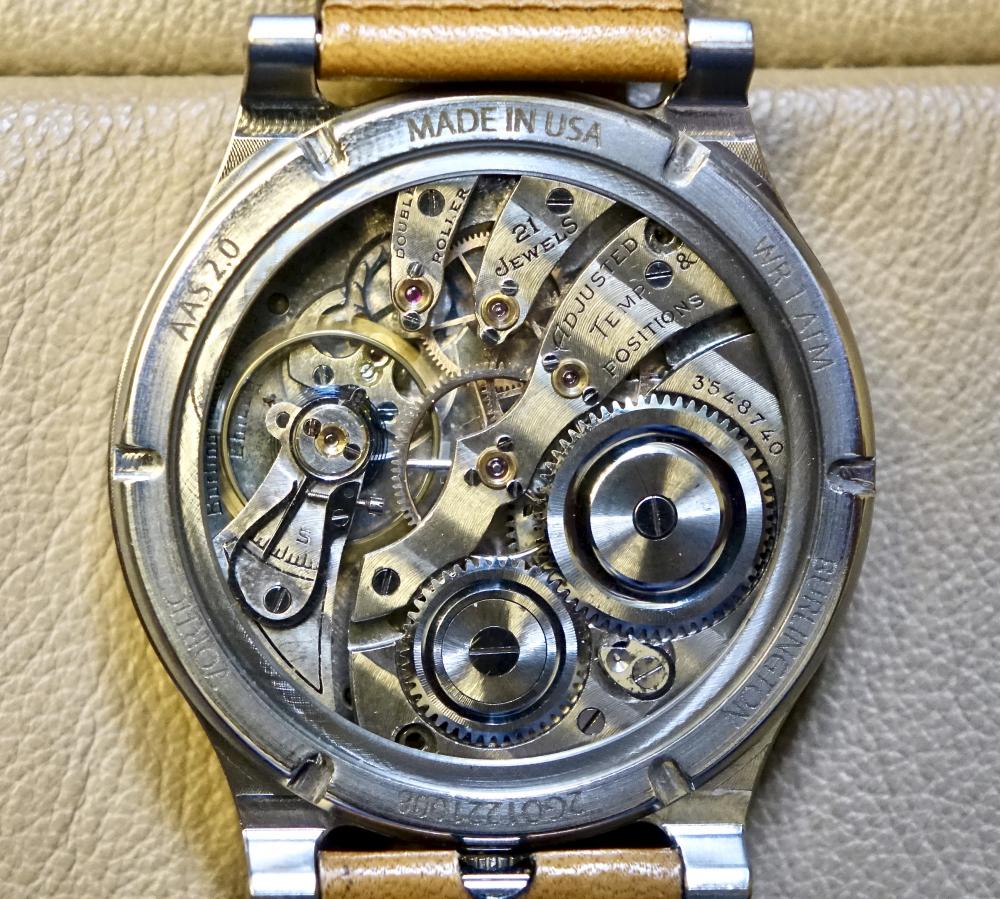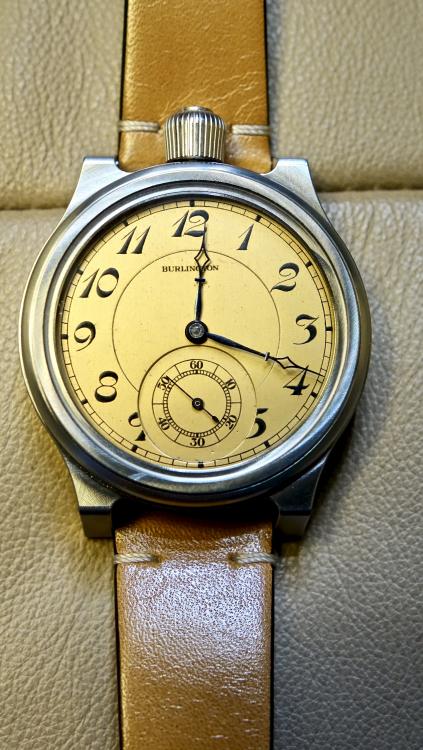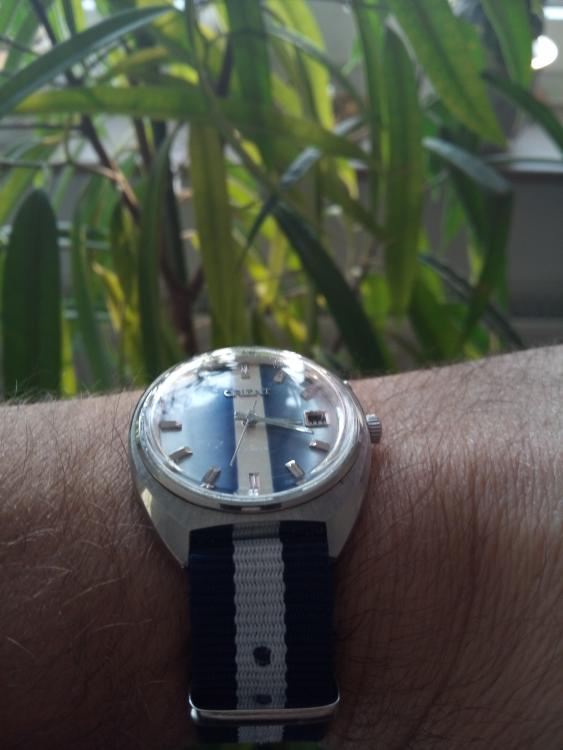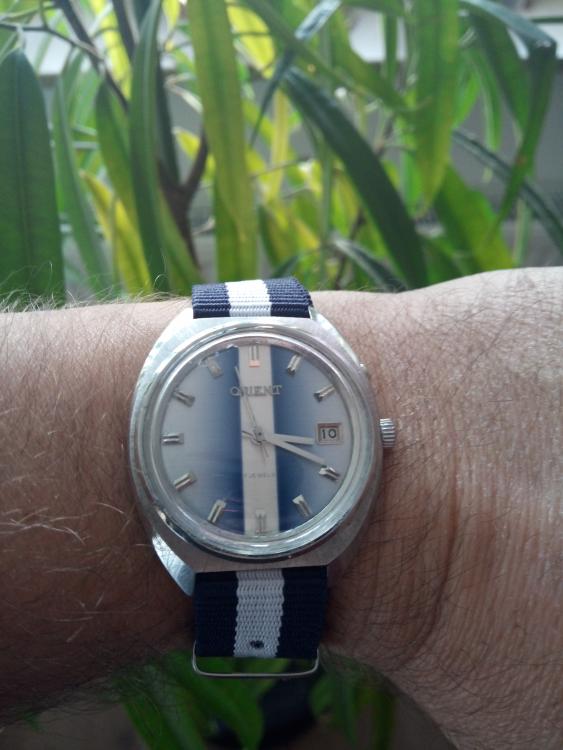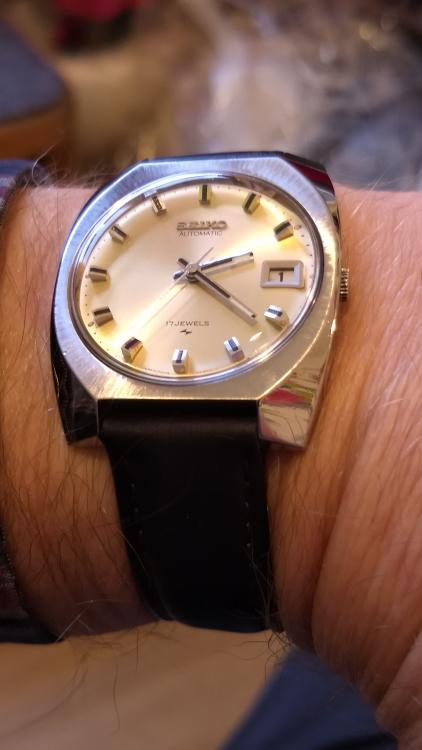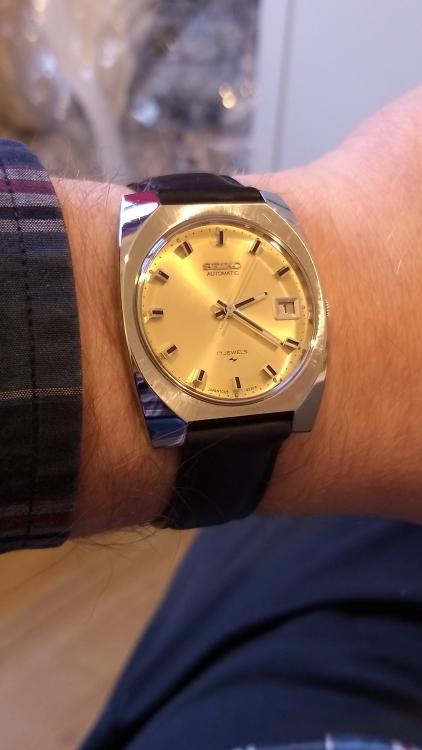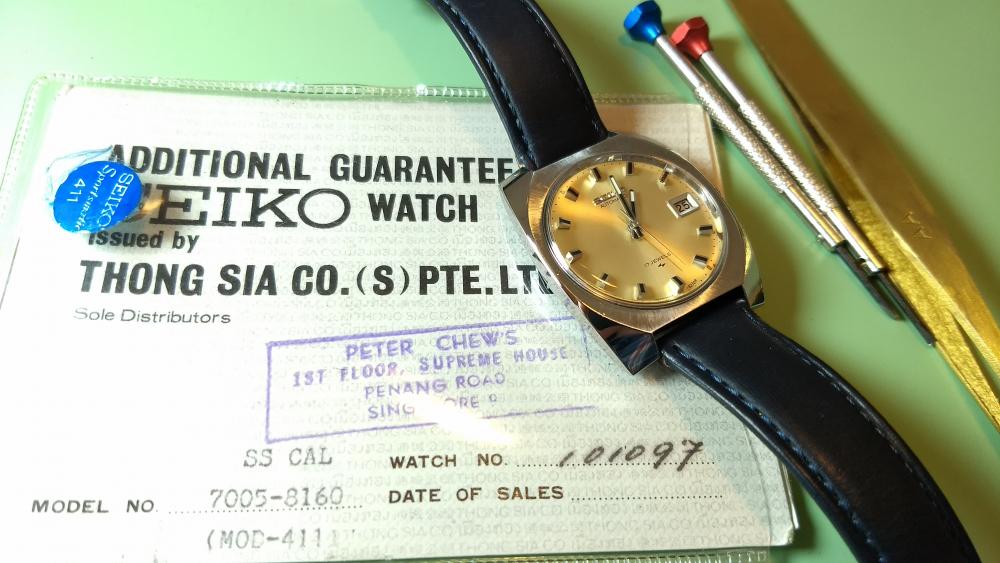Leaderboard
Popular Content
Showing content with the highest reputation on 01/10/21 in all areas
-
3 points
-
Every dial is different. Sometime we read here people wanting to clean corrosion or substrate reaction, or faded paint - you can't do that. While a damped earbud, applied gently, is almost always safe, I have seen cases were it was not. So avoid any chemicals and try first to understand well what is dirt and what is not, what the dial can take and what it can't. Of course, experience helps, when in doubt post good picture here as good advice is always present.2 points
-
White distilled vinegar works wonders too. If a steel screw shows signs of being rusted in place, I'll remove and set aside the balance and pallet lever, and dunk that section in vinegar. Wouldn't try it on quartz movements though. But mechanical ones could benefit.2 points
-
Nucejo and the others are right to loudly state the above. So I feel it necessary to clarify my earlier statement. I sometimes resort to putting my screwdriver blades in a pin vice only for the following reasons: 1 - the handles they came with are so slender (perhaps more than most) that with many screws, I can get no real torque at all. I don't know if all watchmaker's screwdrivers are this slender but I plan to see if I can get thicker ones. My long, spindly fingers are having trouble with them. I also make sure that I... 2 - always oil the screw in question with the thinnest oil I have, and... 3 - know which way the screw turns. There are only a couple reasons, on a couple kinds of parts (such as a crown wheel) that a screw would turn counterclockwise, so this is not the biggest concern...unless that's what you're working on. 4 - I can generally replace that screw with a much less rusty one from my screw bins. So to quantify: if you're gently turning the screwdriver blade, inserted into a slightly larger handle, you do get a bit of a leverage advantage, so you must be even more cautious. If you can sense it still doesn't want to move yet, cranking down on it even harder can do damage (no surprise there I'm sure). I have not snapped a screw head off yet myself, but I know it happens. Somewhere in the forum are a few posts about techniques for removing broken screw shanks from their holes, and some tools designed for that purpose. Those who've never done it should pray they don't need to. But it's good to read about it anyway.2 points
-
2 points
-
I apply penetrating oil to the release botton, remove the winder module with rotor attached then ratchet wheel, let oil set overnight, removing barrel bridge is then a lot easier and less risky that trying to force thing. You can remove bunch of other parts as well with the movenet still inside the case. You would then gain access to parts inside which may have gotten rusty as well, also see if you can remove the crown off of stem which would let you slide the stem through stem tube. DO NOT FORCE ANY PART.2 points
-
Hi markr, no tech sheet but may be of assistance http://www.hamiltonchronicles.com/2016/07/1964-thin-o-matic-t-409.html?m=12 points
-
I stripped and cleaned the 1950s Metamec Electric clock today. It had been lying in "covid quarantine" since its arrival a few days back. As well as the missing wooden detail, it also has a slight fault. The original cable was held in place by two recessed grub screws and a cable clamp of some description. The clamp is missing as is one of the grub screws, which is not a huge issue as I can probably replace those with something modern relatively easily. However the second grub screw is stuck in place and its head has been stripped off, so I will need to figure out whether I want to try to extract it, or fill the holes and make some alternative arrangement to fit the mains flex. I'll probably go for the second option as it will be a lot more secure and less of an electrical safety risk. The idea of recessed live terminals is a little too 1950s for my liking. The more obvious chips and dings in the finish were touched up with shellac, which will probably need a couple of additional coats with a light sanding between them, and I still need to figure out what to do about the missing left hand wooden edge piece. Looking at the small remaining broken piece of it that I have removed, my best guess is that it is oak, so I can either find a bit from the log pile, or maybe take a trip to B&Q and see if they have any hardwood mouldings that could be knocked in to shape and stained. The most tricky part I suspect is not going to be shaping the replacement piece, but colour matching it.2 points
-
I purchased 3 broken watch's last week as scrap but one looks like it might be worth repairing . Its a Hunter pocket watch and it has a number on the face 14342 along with some silver marks and IMC . The cover is missing but the face is in good condition apart from a hair line crack .I have opened it up and it is looks like the signature says Jac McCabe ,Royal exchange . Any information about the date ,information on the maker and is it worth repairing ? The watch owes me nothing as the other watch's i bought with it will cover the cost if I resell them .If worth repairing does anyone know where this can be done ? Thanks Steve1 point
-
While you guys are helping me with the rusty Bulova on that other post (I have set it aside for now), consider this new dilemma. Short story: Date wheel did not work. Discovered a plastic cam was busted. Also noticed that the associated brass wheel was missing a tooth or two. I bought a movement on ebay and swapped out the cam and wheel. I looked and looked for the busted teeth and never found them. (In retrospect, I should have done a complete tear down). Anyway, I put it back together and have been running it for a month or so. Then it quits. I open it up and the date wheel is STUCK. Finally was able to pry it out. What happened was the brass tooth managed to find its way to the setting wheel and slipped in between the wheel and the post and slowly wrapped itself around the post. This was clearly visible under high magnification with my stereo microscope. Wow, what a mess! I have removed the majority of the brass and the wheel now turns freely. BUT, I want to polish the post. Looking around at all of my tools (inherited from my dad), I don't see anything designed for this purpose. I am thinking that I will have to manufacture something. Any ideas. I am already kicking myself for letting this happen--please dont kick me again ?1 point
-
Hey I may have found something. The seconds wheel (the big wheel in the center) is shaped like a donkeys hind leg. I decided to removed train bridge again and run it through by hand. The seconds wheel is not true. So its fine on one side it turns the escape wheel fine but then it dips and misses the escape wheel. So i will let you know if that solves it. Once again thanks for help. cheers gary1 point
-
It was many years ago I studied math and I guess I've forgotten much of it. Anyway, I'm sure it makes sense! ?1 point
-
As stated in my previous post: "Unless you're 100 % sure the energy from the force is going to land exactly where you intend it to, force usually spells disaster." So, when pressing in a crystal with a tension ring, or unscrewing or screwing in a screw, then you know exactly where the force is going to land, so that would not only be OK, but a necessity! Right? ??1 point
-
If the wheel turns freely you gain nothing in polishing the post. However that can be done with a thin leather strip, by hand or on a bow.1 point
-
So true! I have just used the same technique less than a minute ago on Omega 30 caliber.1 point
-
Would you happen to know how long? If not, I have some old junk brass gears that I could experiment with. Steel is not harmed by it, except for the rust. Brass seems okay, if not soaked long. So far, a few minutes has been fine to loosen rust.1 point
-
The same goes for Omega calibre 268 (and likely several other calibres) which had me puzzled for a while.1 point
-
Ok now, remove the ratchet wheel and barrel bridge, you then see and gain direct access to the stem and can do lot more. So far so good. If you can remove the dial, date/ day ring and balance and balance jewels, drop the rest coke, no damage whatsoever by coke 24-48 hrs. then a tooth brush and powedered detergent cleans perfect. I disagree with vinegar for it will damage gears and most any part if soaked for long.1 point
-
Some claim that coke is excellent toilet-cleaner. I never tried as i was afraid it could permanently damage it... Dangerous stuff! However, i tried coke on a smaller scale - dropped one cent in it to soak for several minutes. WOW! It was shiny as new!1 point
-
Really? ? Aren't we "forcing" every screw while removing or installing it? Aren't we forcing a crystal into bezel? Just saying.. DO NOT FORCE ANY PART. perhaps force it a little? ?1 point
-
https://www.cousinsuk.com/PDF/categories/2170_Bulova 11ALA etc.pdf1 point
-
1 point
-
1 point
-
It's a good plan to start removing the oscillating weight and the rest of auto-winding mechanism, and the balance, etc, etc. Please note that on some Bulova movements you need to loosen that screw just by one turn or less and then push it down with the same screwdriver while slightly rotating and pulling out the stem / crown.1 point
-
1 point
-
Yes a cylinder movement uses a cylinder escapement. As watchweasol correctly said, the tampons are plugs in the ends of the cylinder which are also the pivots. As the cylinder is drilled through (thus a cylinder, haha), plugging the ends is the only solution. Tampon is French for plug. I've never had a huge assortment of tampons or cylinders, and always figured that by the time I sorted through and made whatever modifications necessary I could have just made a new one so I do that. Cylinders are a bit of a pain to make, the tampons not so bad. I do have a large assortment of cylinder escape wheels and wouldn't want to try making one!1 point
-
It is not that difficult but is a case where one really appreciate having ready top quality tools like a Feintaster micrometer, a complete staking set and of course the small stakes for tampons. They come however in hundreds of sizes so you must have a vast assortment, then some refinishment may be expected to the total lenght ot pivot shoulder.1 point
-
Hi the consensus is that it is a press to release not a screw, And as such the advice from Joe and VWatchie is in good order. Also as Joe explained, Do Not Force any part.1 point
-
Hi jdm if you fall into that catagory you have my admiration as there are not that many who will even attempt to fit tampons as it takes great care.1 point
-
Hamilton 620 is a re-badged Buren 1005. Although the 1005 isn't included the attached covers the family group. 2540_Buren 1000,1001,1002,1003.pdf1 point
-
I'm proud to fall into that category but I still depend by my mentor's stock. And since the OP wrote that he can wind the mainspring, that is the most likely failure, - a broken pivot. A broken mainspring cannot be wound.1 point
-
A good tip is as a beginner take lots of photos as you start to take a movement apart. I always recommend beginners to start with a pocket watch as its bigger and are very much alike to a standard watch movement. Do not touch fusee pocket watches as those are very different to a standard watch. This will help you to get to know the names of parts. 1033305402_TZIllustratedGlossary(1).pdf1 point
-
If you just remove the barrel and extract the mainspring it will be easier to help. You basically need to measure the barrel ID, arbour's OD, and barrel's depth. Then it's easy to calculate the mainspring strength and length. And hope that calculations are accurate ? . If you are lucky to find the original mainspring inside your watch, then you can take measurements and compare with calculated results. Part number can be obtained from GR catalogue once you have your mainspring Height, Strength, Length numbers.1 point
-
1 point
-
Must say, this is a perfect example of accelerated learning by modern tools! These photos even made me buy a dozen or two of these Russian watches. You and Endeavor are a true inspiration sources even for a hard-core Swiss watch enthusiast like me. Thank you….1 point
-
Frankly Khan, Did you not check the staff's pivot shakes? Specially if we haven't seen/cleaned the jewels to it. First thing to check as soon as we can access the balance in the movement, is its shakes, to find out if there is a pivot and if the pivot stays inside jewel hole and doesn't jump out with little force. Regs Joe1 point
-
1 point
-
0 points





